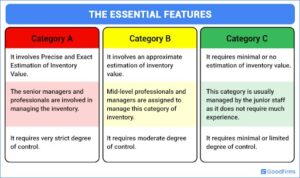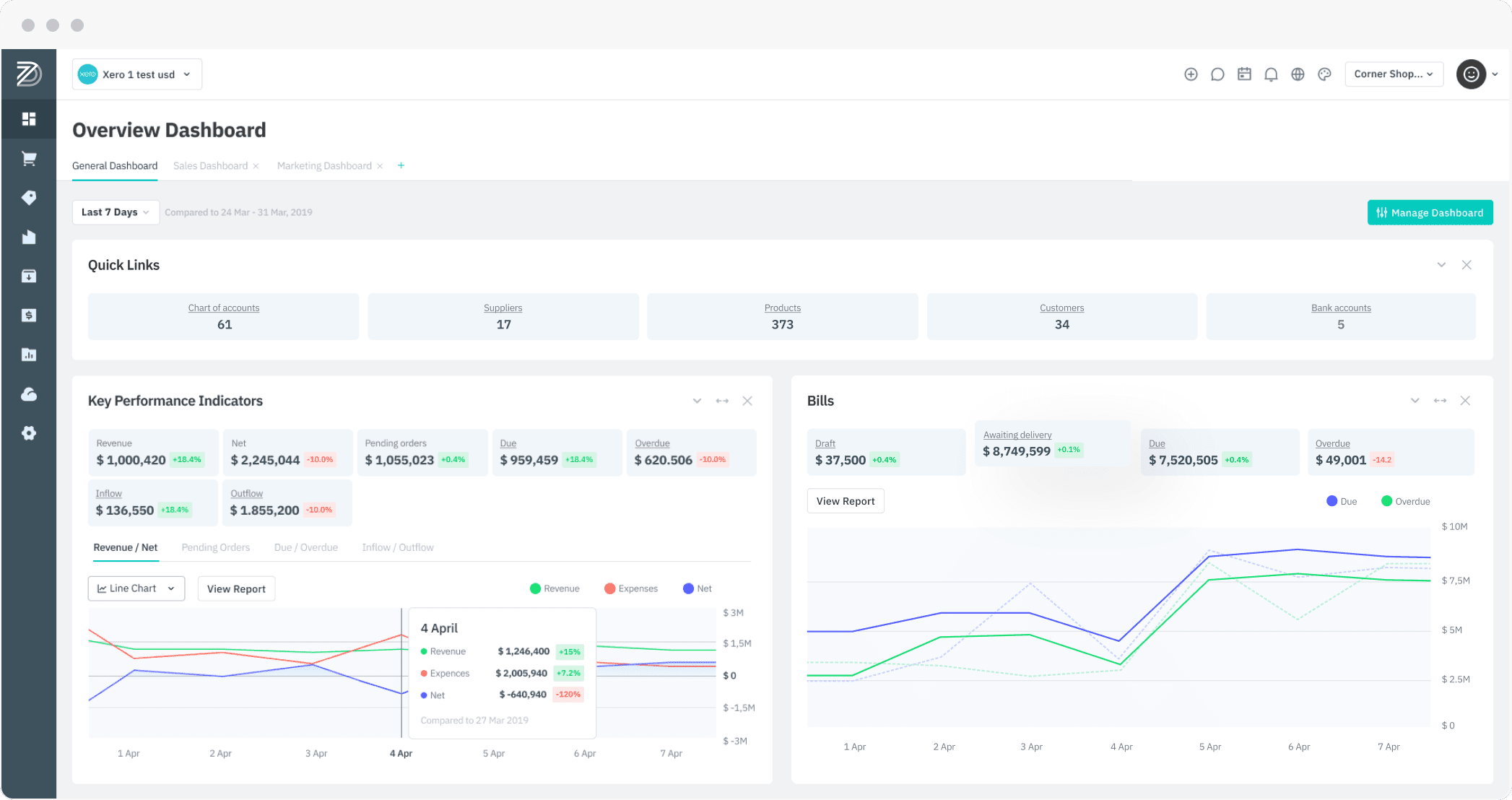The warehouse management process might seem easy on the surface. Isn’t it simply putting items on shelves and retrieving them when necessary? In reality, it’s much more challenging than that! In fact, there are many things that can go wrong. You can misplace orders, ship to the wrong location, miss delivery dates, and more.
Ultimately, the fate of your customer’s orders depends upon successful warehouse inventory management. We understand that managing the inventory can be overwhelming and that’s why we’re here to help. The team at DEAR Systems has compiled inventory management frameworks and strategies for you to maximize efficiency and reduce wastage.
Let’s get started!
The importance of warehouse inventory management
Inventory management helps companies identify storage levels and alerts them when they need to reorder. It allows companies to respond to market trends and ensure that they have enough stock to fulfill customer demands. Since you have finite space in your warehouse, you need to meticulously plan your stock levels.
It doesn’t make sense to hoard excess inventory. You don’t have enough space, and you need to keep cash flow to pay for stock acquisition. Because of this and more, inventory management is absolutely essential. Here are three essential benefits to warehouse inventory management:
Improved cash flow
Inventory turnover is an excellent metric for assessing product sales because it tells you the frequency in which a particular item has sold in a period. With proper inventory management, you can invest your money in acquiring products that are in demand. This ensures healthy cash flow and mitigates the risk of having obsolete stock.
Reduced costs
Dealing with inventory requires buying, transporting, and storage. This is called the “carrying cost.” When you analyze market trends, you can better gauge market demand. This data can help you purchase stock in appropriate quantities to meet demand and reduce holding costs.
Increased customer satisfaction
Good inventory management helps deliver orders on time and reduces stock misplacement. This, in turn, helps develop loyal customer relationships.
Tips for effective warehouse inventory management
Use barcode labels and scanners
It’s easier to keep track of your inventory when you assign specific barcodes to each item. When you use barcodes, your warehouse management software registers a product’s location whenever it gets scanned. This reduces the chance of stock getting lost during daily operations. Stock counting becomes easier when inventory data is in the system. This way, you’re able to reconcile data with physical count to identify discrepancies.
Implementing barcode scanners also helps with the order picking process. No matter how you pick orders, the scanner can be calibrated to best suit your workflows. Based on your picking method, the barcode scanner directs workers to the correct inventory location. This helps save time and reduces picking errors.
If you’re dealing with multiple warehouses, barcode scanners can help with stock transfers from one warehouse to another. While transporting or receiving shipments, workers can simply scan barcodes to see what’s inside.
Classify inventory using lot ID and serial numbers
Lot ID is used for items like food and fireworks. ‘Lot’ is assigned to a group of products that exhibit shared properties. Despite not being completely identical, they are grouped together because they share certain similarities. The lot numbers provide an additional layer of accuracy to help track manufacturing dates, ingredients used, and expiration date.
Serial numbers are used for items such as cars and laptops. It is assigned to individual products that can be different iterations of the same product. Each product gets a unique serial number, which helps track it throughout shipment stages until arrival. For instance, your laptop’s serial number can help track it if it gets lost or compromised.
It’s important to remember that you need to have a barcode scanner to use serial numbers and lot IDs. If you do not have barcode scanners, it’s probably not the right time to implement them.
Get real-time information about inventory
Modern-day warehouse management systems (WMS) can help you tag and track products in real time so that you get an accurate overview of your warehouse’s performance. This helps you make better decisions and reduces confusion about your stock status.
Through real-time visibility, you save time that you would have spent verifying quantities. You should have all the reports and statistics you need whenever you need them. A great way to do this is by utilizing robust warehouse management software.
Use the 80/20 rule
An Italian economist, Vilfredo Pareto, created the 80/20 rule, which is also referred to as “the Pareto Principle.” The Pareto principle states that 80% of results come from 20% of efforts. This concept can also be applied to inventory management. In that context, the 80/20 rule implies that 80% of sales and profits come from 20% of products.
Once you identify your most lucrative products, you should prioritize them over slower sellers. If you want to maximize profitability, you can even sort the most profitable products within that 20% and prioritize them again. This will help you optimize your warehouse’s inventory management and increase both sales and margins.
Toyota Motor Corporation uses this framework to keep up with customer demand. They always try to stock the top 20% of models that contribute to 80% of sales in each of their markets.
Prioritize inventory
Prioritizing your best-selling stock is an integral part of successful inventory management. It is ideal to organize your stock into specific, easily-identified categories. You can then set different priority levels for each type.
ABC (Always Better Control) is a method that helps classify and manage your inventory. ABC stock classification is derived from the 80/20 rule and organizes inventory into three categories: A, B, and C.
- The “A” category refers to high-value stock that’s usually low in quantity. It offers the highest profit margin but is often expensive to manufacture. A consists of the 20% products that generate 80% of total revenue.
- The “B” category refers to stock that is medium in value and sales. These items neither offer the highest margins nor do they sell the best. B consists of approximately 30% of products and generates 15% of revenue.
- The “C” category refers to lower value stock that’s higher in sale quantity. These are the smaller items that are constantly moving and seldom stored for a long duration. These items sell frequently but have a lower profit margin. C consists of 50% of products and generates 5% revenue.
These three categories are different in value, so you should treat them differently. The image below illustrates how to best organize each category.

Conduct randomized quality checks
Even if you use the best operating procedures and the latest equipment, your warehouse is prone to human error. Warehouse managers should perform randomized pick and pack checks (especially with inventory being handled by new hires) to ensure that the shipments are accurate and of top-notch quality.
The frequency of the checks is up to you. Some organizations prefer an annual in-depth audit, and others prefer a weekly auditing model. Select the model that best suits your business.
Prioritize safety
According to the Occupational Safety and Health Administration (OSHA), most industrial accidents are caused by slips, trips, and falls, which make up 15% of all accidental deaths.
Therefore, it’s important to make sure to build a safe working premise, especially when dealing with heavy equipment in your warehouse. Workers should wear appropriate clothing, footwear, and headwear to protect themselves. When workers deal with equipment, it’s imperative that adequate training is provided. Always make sure the loading docks are equipped with suitable dock plates and boards to allow for safe, accurate delivery.
Standardize your inventory management process
You need a standardized inventory management process, especially if there are multiple warehouses. When employees don’t have standardized processes, they use their own discretion to receive and manage the stock, which can lead to discrepancies.
This type of disorganization can break your supply chain and unbalance your inventory. Creating a standardized inventory management process is essential to ensure that stock is received and maintained uniformly throughout your warehouses.
Analyze your sales data
Tracking sales is another essential part of managing your inventory effectively. When you track sales, you can spot inventory patterns like seasonal drop offs, periods when stock is sold most, items that are often bought together, and more. This data can help you plan your inventory levels and cater to demand. Inventory management software can help you track inventory and generate reports that help when making decisions.
Set up low stock alerts
By using ABC classification, you can determine optimum inventory levels. You can also create a low stock alert that tells you when to reorder new inventory. Reordering on time ensures that you do not face losses due to stockouts and also prevents overstocking. Traditionally, a safety stock of 10% of your total inventory should be maintained at all times.
A robust warehouse management system helps you automate your reordering process by automatically sending a purchase order to a vendor when your inventory falls below a set threshold.
Choose a costing method that works for you
Your costing method helps with accounting and optimizes your inventory management process. There are two well-known costing methods.
- FIFO method – The first-in, first-out method prioritizes selling the oldest inventory items first. The rationale is that if you sell the oldest inventory first, you end up paying for the oldest purchase order first. The FIFO method keeps stock fresh and reduces the chances of obsolete inventory.
- LIFO method – The last-in, first-out method prioritizes selling the latest inventory first. LIFO provides a significant tax advantage as you focus on the new cost. It also offers a superior customer experience as they get access to the newest stock.
Use advanced inventory management techniques
Now that we have discussed the costing techniques, let us examine three common inventory management tactics to help you stay on top of your inventory turnover.
- Push relies on forecasting demand for a product based on historical evidence and bulk storage. The push system is ideal for businesses with high storage space and deep pockets. Companies that sell winter coats, for example, rely on this method.
- Pull relies on maintaining minimum acceptable inventory levels. The pull system is perfect for smaller businesses with limited budgets. Companies that do customized orders, for example, use this method.
- Just-in-time is a method where you order the inventory just before a customer demands it. This method reduces storage costs and keeps the inventory fresh, but you need a solid supply chain to make it work.
Unfortunately, there is no “one-size-fits-all” technique. The choice of inventory management technique depends upon the type of product you sell, as well as your supply chain framework.
Use robust warehouse inventory management software
To cater to modern-day customers, you need to leverage modern-day technology. With the latest warehouse management system tools, you can say goodbye to cluttered spreadsheets if you want to track and manage your warehouse inventory effectively.
If you’re in search of a modern warehouse management tool, DEAR Systems can be the perfect fit for you. Our cloud-based warehouse management solution keeps track of your inventory in real-time — and it’s accessible from anywhere, at any time. It also allows you to automate stock reordering so you never run out of inventory. Finally, you can simply use the wireless barcode scanner to verify orders and alert managers if there are any discrepancies.
Book a call with us now to learn more about how we can help your business with fast, efficient, and easy warehouse inventory management.






